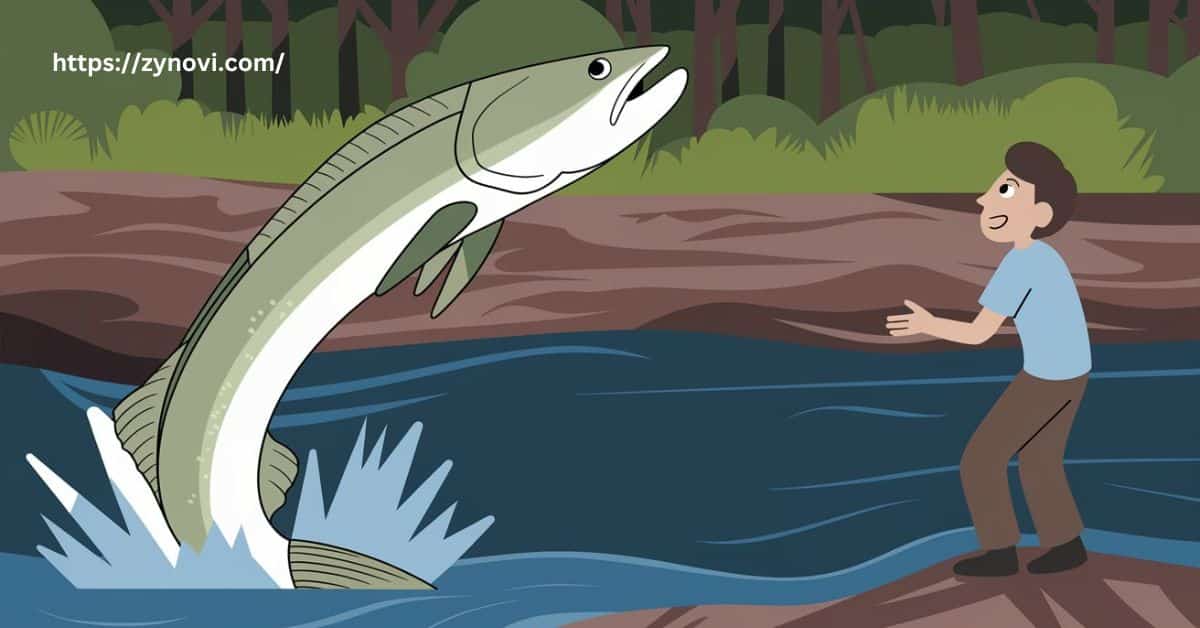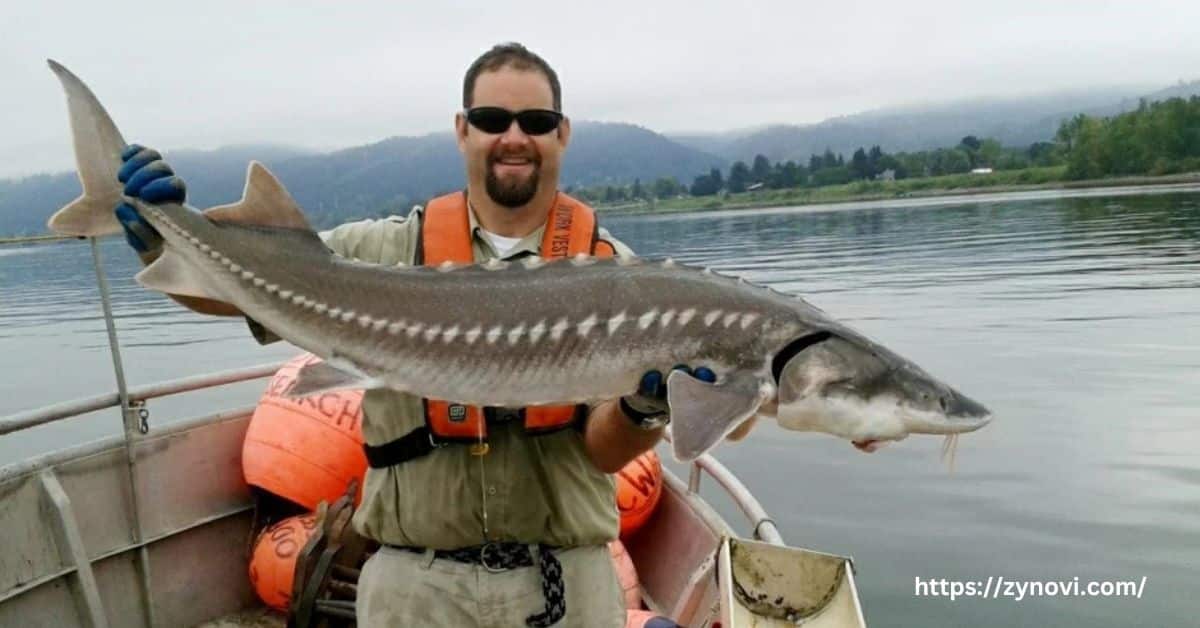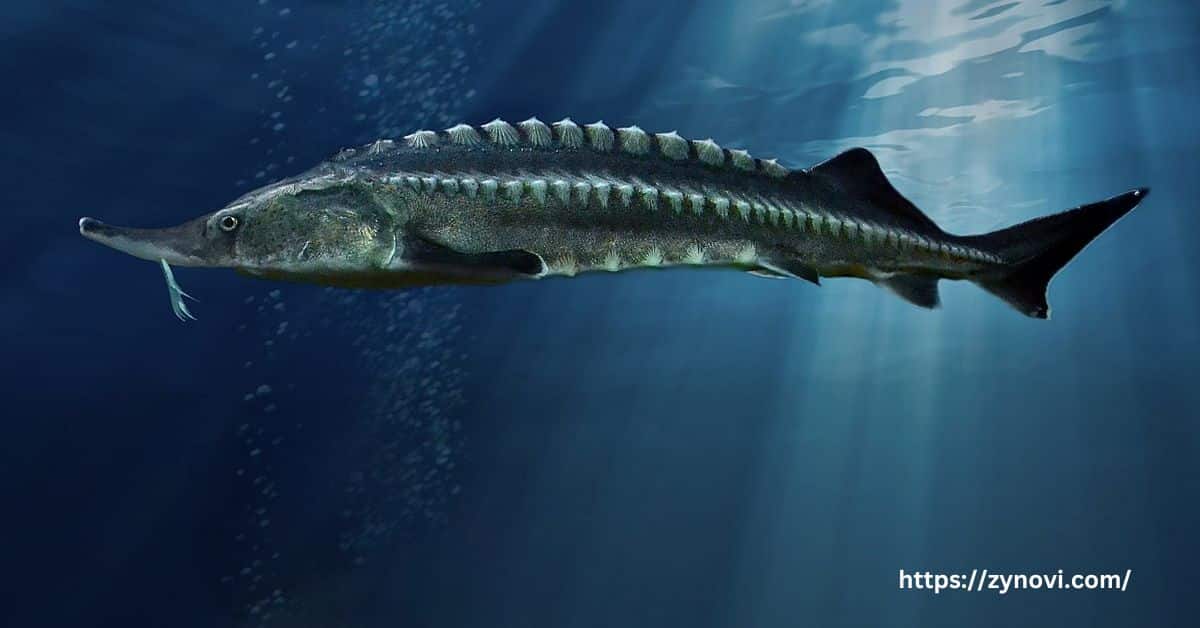Do Sturgeon Attack Humans? No, sturgeon do not actively attack humans, but their size and breaching behavior can pose accidental risks.
It’s a question that has crossed many minds, especially for those venturing out into sturgeon-inhabited waters. These ancient giants are fascinating creatures, but their size and unpredictable movements can lead to startling encounters.
While sturgeon are not aggressive by nature, their breaching behavior can pose risks to boaters, swimmers, and anyone nearby. Stick with us as we find into the facts behind sturgeon behavior, how to avoid accidents, and why these incredible fish are more misunderstood than feared. Let’s uncover the truth together!
What Are Sturgeon?
Sturgeon are remarkable, ancient fish with a lineage that dates back over 200 million years, making them one of the oldest fish species still in existence. Known for their unique anatomy and ecological importance, they are considered non-aggressive fish, posing minimal threat to humans.
Sturgeon belong to the family Acipenseridae and inhabit diverse aquatic ecosystems, ranging from freshwater rivers and lakes to brackish coastal waters.
These fascinating creatures are characterized by their torpedo-shaped bodies, bony protective plates called scutes, and sensory barbels that help them locate food on riverbeds. Their presence is vital to maintaining balanced aquatic habitats.
Physical Characteristics of Sturgeon
| Feature | Description |
|---|---|
| Size and Weight | Sturgeon are among the largest freshwater fish. Some species, like the Beluga sturgeon, can grow up to 20 feet long and weigh over 2,000 pounds. |
| Anatomy | Sturgeon have torpedo-shaped bodies covered with protective bony plates called scutes, which serve as natural armor against predators. |
| Barbels | Near their gummy, toothless mouths, sturgeon possess barbels, sensory organs that allow them to locate food hidden in riverbeds or sediment. |
Habitat and Distribution
Sturgeon inhabit a variety of aquatic environments across the globe:
- North America: Species like the Gulf sturgeon thrive in the Suwannee River and St. Johns River in Florida, where they navigate both freshwater and brackish waters.
- Eurasia: The Beluga sturgeon is predominantly found in the Caspian Sea and Black Sea, along with major rivers like the Danube and Volga, which serve as critical spawning grounds.
- Pacific Northwest: The White sturgeon is native to waterways such as the Columbia River and Fraser River, favoring deep, oxygen-rich waters for feeding and migration.
Are Sturgeon Dangerous to Humans?

Are sturgeon fish dangerous? The short answer is no sturgeon are not aggressive. However, their size and behaviors can sometimes lead to accidental injuries.
Natural Behavior
Sturgeon are bottom-feeders, meaning they spend most of their time near the river or lakebed, using their barbels to detect prey.
These barbels help them locate food like small fish, crustaceans, and mollusks buried in the substrate. Unlike many fish species, sturgeon are not active predators and do not pose a direct threat to humans.
Their feeding behavior is essential for maintaining healthy aquatic ecosystems, as they help control populations of smaller organisms in the riverbeds where they forage.
Accidental Interactions (Do Sturgeon Attack Humans?)
Do sturgeons bite?
- Size and Unpredictable Movements: Despite being non-aggressive, sturgeon are large and powerful, which can result in collision risks, especially when they breach unexpectedly.
- Breaching Behavior: Sturgeon are known for their breaching behavior, where they leap out of the water, often without warning, which can pose a risk to nearby boats or swimmers.
- Recreational Activities: Boaters, kayakers, and swimmers in areas with high sturgeon populations may encounter these fish unexpectedly, leading to potential accidents or injuries.
Why Do Sturgeon Jump Out of the Water?
One of the most fascinating aspects of sturgeon behavior is their tendency to leap, or breach, out of the water. While the exact reasons remain speculative, scientists have proposed several theories:
Sturgeon Breaching Behavior
- Communication Among Fish: One theory suggests that breaching might serve as a form of communication between sturgeon. The sudden leaps could help signal other fish in the area, possibly alerting them to potential threats or coordinating movements within a group.
- Parasite Removal: Another possible reason for breaching is parasite removal. By jumping out of the water and splashing down, sturgeon may dislodge parasites or unwanted organisms that cling to their bodies, aiding in their overall health and hygiene.
- Predator Evasion: Predator evasion is another speculative explanation for sturgeon breaching. The sudden leap could be a survival tactic to evade potential threats, such as larger predators, by quickly escaping into the air and changing their position within the water.
Sturgeon breaches are not only aerial spectacles but also showcase the fish’s power and agility. These jumps can be especially impressive, with some individuals weighing hundreds of pounds, creating large splashes as they breach the water’s surface.
Do Sturgeon Attack Humans? Potential Risks to Boaters and Swimmers

Although sturgeon are non-aggressive, their breaching behavior and large size make them a potential hazard in certain situations.
Sturgeon-Related Incidents in Waterways
Can sturgeons kill you? Here are some incidents about this fish
- Suwannee River Incidents: In the Suwannee River, boaters have reported injuries caused by breaching sturgeon. These incidents highlight the risks associated with unexpected interactions between large sturgeon and recreational watercraft.
- 2015 Tragedy: In 2015, a tragic incident occurred when a 5-year-old girl lost her life after a sturgeon leaped into her family’s boat. This unfortunate event underscores the potential dangers of sturgeon breaches, particularly in areas with high fish populations.
Factors Increasing Risk
- Boating Speed: High-speed boats increase the likelihood of collisions with sturgeon. Faster speeds reduce the ability to react quickly, putting boaters at greater risk of encountering breaching sturgeon unexpectedly.
- Seasonal Activity: Sturgeon are most active during their spawning seasons, typically in spring and summer. During this time, their breaching behavior is more frequent, which heightens the risk for boaters, swimmers, and kayakers in these areas.
| Risk Factors | Impact |
|---|---|
| High boat speeds | Increased collision likelihood |
| Breaching during spawning | Accidental strikes to boaters or swimmers |
| Narrow waterways | Higher chance of close encounters |
Do Sturgeon Attack Humans? Sturgeon Encounters with Humans
There have been several high-profile cases of human-sturgeon interactions, highlighting the importance of understanding these fish:
Florida’s Suwannee River:
This river, home to Gulf sturgeon populations, has seen multiple injuries from breaching sturgeon, with boaters and swimmers at risk of unexpected collisions.
St. Johns River:
Boaters in Florida’s St. Johns River often encounter breaching sturgeon, especially during the high-activity spawning seasons, raising the risk of accidents in these areas.
These incidents underline the critical need for caution and awareness when venturing into sturgeon-populated waters, particularly during peak activity times.
Safety Tips for Avoiding Sturgeon-Related Injuries

Taking simple precautions can significantly reduce the risks of sturgeon collisions. Here are some effective safety measures:
Boating Safety
- Wear a Life Jacket: When boating in areas inhabited by sturgeon, always wear a life jacket. This essential safety gear ensures that you stay safe in the event of an unexpected collision or if you are ejected from the boat due to a breach.
- Reduce Boat Speed: In areas known for breaching sturgeon, it’s crucial to reduce boat speed. Slower speeds allow you to react quickly to sudden movements in the water, minimizing the risk of collisions.
- Avoid Narrow or Shallow Waterways: During spawning seasons, avoid narrow or shallow waterways where sturgeon are more likely to be active. These areas increase the likelihood of breaching, and steering clear of them can help you stay safe.
Swimming Safety
- Stay Out of Known Sturgeon Habitats: Avoid swimming in high-activity periods in areas where sturgeon are known to inhabit. These periods, especially during spawning seasons, see increased breaching behavior, which raises the risk of injury.
- Avoid Provoking or Touching Sturgeon: Never attempt to provoke or touch sturgeon while swimming. Though sturgeon are non-aggressive, their large size and unpredictable movements can lead to accidental collisions or injuries.
General Tips
- Follow Wildlife Advisories: Always adhere to wildlife advisories and warnings in areas with high sturgeon populations. These guidelines are based on current sturgeon activity and environmental factors that may affect their behavior.
- Maintain Safe Distance from Breaching Zones: When near breaching zones, maintain a safe distance from the water’s surface. This ensures you’re far enough to avoid being injured by a leaping sturgeon, which can weigh hundreds of pounds.
FAQs
How dangerous are sturgeons?
Sturgeons are not inherently dangerous, but their size and breaching behavior can cause accidental injuries to boaters or swimmers.
Are sturgeons gentle?
Yes, sturgeons are generally gentle and non-aggressive fish, focusing on feeding and navigating their habitats without posing a threat to humans.
What happens if you catch a sturgeon?
Catching a sturgeon can be challenging due to their size and strength; some species are protected, so releasing them carefully is important to avoid harm.
Do sturgeon have teeth?
No, sturgeon do not have teeth. Instead, they use their barbels near the mouth to detect and catch prey.
Conclusion: Do Sturgeon Attack Humans?
Sturgeon do not actively attack humans, but their size and unpredictable breaching behavior can present significant risks, particularly for boaters and swimmers. While these fish are non-aggressive, their powerful jumps and collisions with vessels can cause injuries.
By understanding their natural behavior and taking the necessary precautions, we can coexist with these majestic creatures and appreciate their important role in aquatic ecosystems. Sturgeon are living reminders of the Earth’s ancient past, and by protecting them, we help preserve these incredible fish for future generations.










